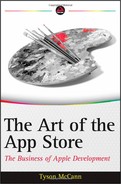HOW TO SUCCEED WITH A FREEMIUM APP
Freemium apps represent one of the most profitable new business models in the App Store. The freemium model (via microtransactions) caught fire in Asia several years ago, and has since been the East's number one source of revenue for interactive games and media. The numbers speak for themselves.
In July 2011, the company Flurry (blog.flurry.com) reported that of the top 100 games, 61 percent of all revenue in January 2011 came from premium games, and 39 percent from freemium games. In just six months, this shifted to 65 percent freemium, and only 35 percent premium.
Another report the same month (again from a study by Flurry) revealed that games accounted for 75 percent of the revenue of the top 100 iOS apps across all categories, and that 65 percent of these were freemium. The overall number (as of this writing, and likely expected to get higher, perhaps even much higher) is that nearly 50 percent of the revenue of the top 100 iOS apps come from freemium games.
One of the most poignant insights in the article was centered on the average price point for a transaction. At the time, this was $14 spent per transaction by consumers, on average, for every freemium transaction. At first, this seems very high, but further evidence was provided. In the under $10 category, transactions clustered around $0.99, $4.99, and $9.99, which is no surprise. However, what was surprising was that less than 2 percent of all transactions were at $0.99. Furthermore, 71 percent of all transactions were from the under $10 category, 16 percent from the $10–$20 category, and 13 percent from the over $20 category. As a matter of fact, 5 percent were purchases greater than $50.
The research raised the question of why so few relative customers were willing to pay $0.99 for a transaction when that is the most popular price point for paid apps. The insightful answer from Flurry GM of Games, Jeferson Valadares, was that there is a different mindset when making an in-app purchase. For in-app purchases, you are deciding whether to spend, not on what or how much to spend. In other words, once you make the decision to spend, the amount makes less of a difference.
This is especially true with most of the microtransaction models, in that value is typically presented as “higher price equals higher value,” and, therefore, many people opt for the higher value option.
The same study provided a bit more useful data as well. The number of transactions was inversely correlated with revenue generated. That 71 percent of transactions were under $10, it accounted for only 31 percent of the total revenue generated, while the meager 13 percent that were $20 and over transactions accounted for just over half of all revenue earned, or 51 percent. The take-away was this: Have a range of freemium options when feasible, from the $0.99 option to possibly up to the $100 option, and let the users decide what the best value option is for them.
Let's now look at the various types of freemium monetization methods, or available options, depending on your app.
Microtransactions and the Long Tail
The Long Tail represents a more recently publicized, highly successful business strategy (in certain cases) that is based on offering lots of different options to consumers, rather than just a few of the most popular. It is mainly used with the Internet, via fulfillment companies, and through digital distribution — pretty much anywhere unique goods or services can get to the consumer affordably.
It is called Long Tail because it is based off a curve that looks something similar to Figure 7-14. Because of the ease of getting products to consumers within systems that allow for affordable delivery, it becomes much easier to offer the world and get all potential customers to flock to you to pick and choose, than it is to offer just the popular items and get good sales, but only from the customers who are interested. A common example quoted by one Amazon employee was that Amazon sold more books today that didn't sell at all yesterday, than they sold today of all the books that did sell yesterday.
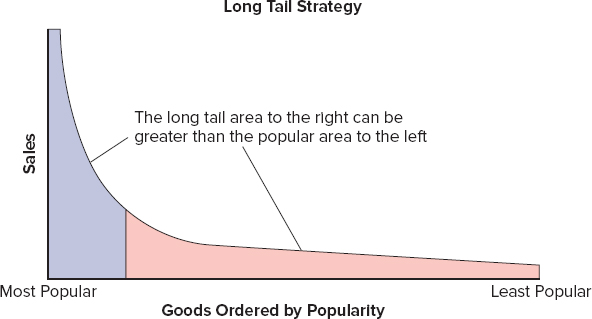
FIGURE 7-14: In a Long Tail strategy, more is earned from many unique goods as a whole than from a few popular goods
A Long Tail success in the game industry is Steam, which has been by far the leader in digital game distribution. At first, it offered up only the most popular games, and then opened up to a more diverse set of games. Now it offers not only almost any new game for digital distribution, but also showcases vast numbers of indie titles.
It happens that, for apps, a microtransaction-based revenue model (especially when paired with the common virtual goods freemium model) falls neatly in line with the Long Tail strategy. Games like “Farmville” and “Smurfs' Village” are a given, because they typically offer hundreds of assets at different virtual currency prices from which users may pick and choose.
To utilize this strategy in your app, whenever you have the capability to offer options to customize the experience in your app, don't just offer what might be considered the most popular. Rather, offer a more diverse selection so that all users can pick and choose something they like. Of course, there's a balance to find in knowing what will seem overly greedy to the consumer. But that assessment is best made when first judging the value of your own app. Whatever you choose to sell individually, make each piece distinct, and something that would appeal to at least one type of consumer.
Viable Ways to Monetize
As discussed earlier, the freemium model depends on providing something for free, and then limiting the use or availability of content or features in some way until the user pays for it. This is usually done in two ways — via DLC or microtransactions — and there are many creative ways to make use of them. The following sections provide lists (absolutely not all-inclusive) that may be of use to you in order to spark ideas for your app(s).
![]() The following lists were compiled in part using data from the top 100 grossing apps as of this writing.
The following lists were compiled in part using data from the top 100 grossing apps as of this writing.
DLC Examples
Following are examples of DLC:
- Levels
- Modes
- Characters
- Theme packs
- Texture packs
- Sound packs
- Voice packs
- Animation packs
- Editing tool
- Databases
- Charts and graphs
- Proprietary information packs
- Add-on features
- Other apps
Subscription Reasons
Following are reasons to use subscriptions:
- For simply using the app
- For news updates
- For propriety information
- For continuous support
- For technical help
- For questions answered
- For streaming services
- For access to specific groups
- For sharing
- For communication
- For networking
- For accessing certain features
Microtransaction Examples
Following are examples of microtransactions:
- Offering multiple tiers of virtual currency (the most common example)
- Removing ads
- Buying a full version
- Offering individual/packs of features
- Offering virtual goods (characters, clothing, in-game tools, weapons, items, and so on)
- Using themes/customization options
- Providing game aids (such as the “Angry Birds” Mighty Eagle that lets you skip levels)
- Providing power-ups (health, energy, boosts, and so on)
- Offering achievements
- Adding modes
- Adding gadgets
- Adding sounds
- Adding animations
- Offering donations to developers
- Offering more usage of the app (rather than subscription, could be time- or use-based)
- Offering store savings (purchase for percent discounts on actual or virtual goods)
Implementing a Virtual Currency System
Virtual goods can be anything from new wallpapers for your i-device background, to clothing to customize an in-app avatar, to purchasable weapons or power-ups in a game. They don't have to be permanent, but can be consumed and repurchased.
The way virtual goods are bought within the app is almost always virtual currency, though many apps simply offer them for real-world money. Virtual currency is simply a representation of real-world or imaginary currency of some sort (diamonds, coins, smurfberries, “bux,” and so on), and is almost always bought with a real-money purchase.
Virtual currency (also known as premium currency) is one of two types of currency found in these games. Although some use more types of currency, generally that is not needed. It is almost always paired with a common type of currency such as coins (also virtual, but not what's being referred to in this case) that you earn by doing routine tasks within your app.
This model is great for revenue because it allows users to purchase common and required virtual goods for the common currency they earn, then “save up” or outright buy virtual (premium) currency in order to make premium purchases, which typically allow you to be more unique or progress further or faster in the world of the app.
Let's look at a good example of a freemium game using virtual currency, and one in which the author of this book is very familiar with in the name of research — “Smurfs' Village,” an often Number 1 grossing title (at least on iPad, and fairly high on the iPhone) by Capcom Mobile, developer Beeline.
Earning Common Currency
“Smurfs' Village” (SV from here on out) is all about customizing your village from its humble beginnings to a Smurf Mecca. There are many such games like this on the App Store, most all of which utilize virtual currency. The way to earn the normal currency (or gold coins in SV) is to plant crops or flowers, wait until they are ready to harvest, and then tap them for both experience points and gold. Experience points (xp) let your village go up levels, which gives you access to more stuff, and more gold lets you buy that stuff, which you can then place in the village to make it prettier (or, in the case of the usual “featured” villages, more cluttered).
Figure 7-15 shows the choosing of a flower to plant. Note the gold in the upper left (around 30,000), the duration of the harvest, gold paid to plant it, gold earned when finished, and xp earned. The user has many options here, and some require the unlocking of certain premium content to be able to plant.
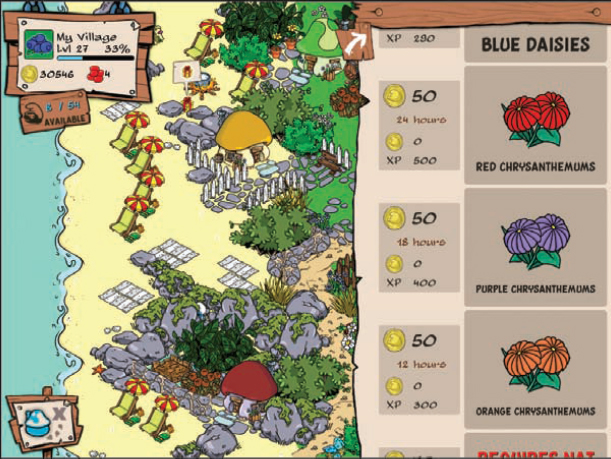
FIGURE 7-15: Choosing what to plant depends on how much time you have to wait around — if you don't harvest, they wither
Earning premium currency does happen in SV, but it's dished out in a very clever way so as to only occur on level-ups, and very occasionally at random given by a certain character. This lets users have just enough to see the benefit, and maybe buy one or two buildings by the middle/late game, but not much more. If you want the premium buildings/characters/critters, you'll have to pay.
Common Items Cost Common Currency
About 80 to 90 percent of all items in the game can be bought using common currency, or gold, as shown in Figure 7-16. The remainder can be bought with the premium currency called smurfberries. With gold, you can buy paths, landscaping, flowers, and crops to plant, and critters to place on the land.
Premium Items Cost Premium Currency
As shown in Figure 7-17, the SV store is simple and straightforward. There is a tab for buildings and other structures, plants and paths of all kinds, and the smurfberry premium tab, where most everything there costs smurfberries. This is where you'll find the Smurfs themselves (or rather their buildings — they come and roam around for “free” once you buy the building).
Premium Currency Buys Common Currency
Because the world in SV can hold an incredible number of items, and options are almost endless, the player eventually runs out of gold, whether from planting xp-favorable crops that don't earn much gold but do offer accelerated leveling, or by filling up the world with items. Therefore, SV (and other games like this) provides the option to purchase common currency with premium currency, as shown in Figure 7-18.
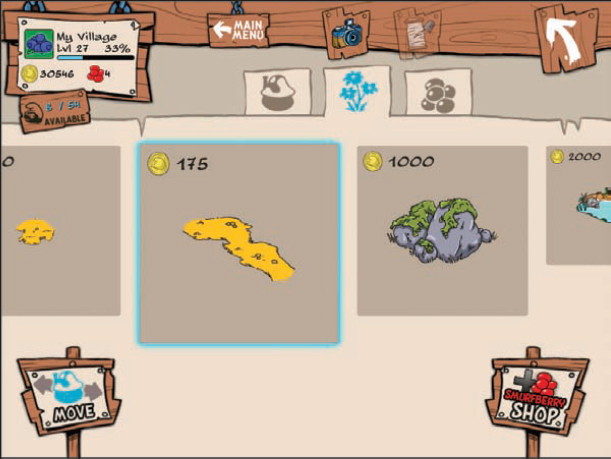
FIGURE 7-16: Common currency (gold coins) can buy most of the things in “Smurfs' Village,” but not much of the real fun stuff such as characters
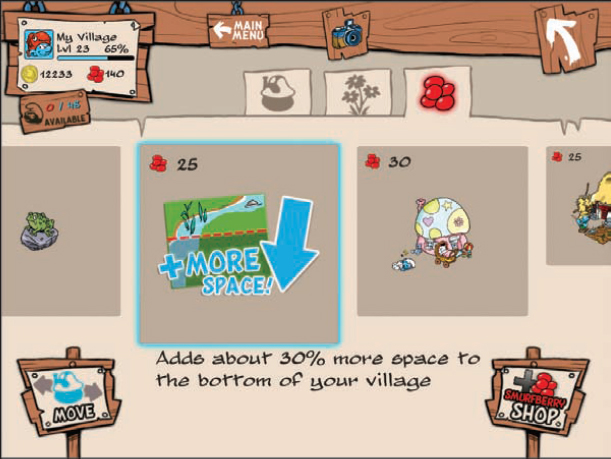
FIGURE 7-17: Paying with premium currency is the only way you can buy more land to expand your village
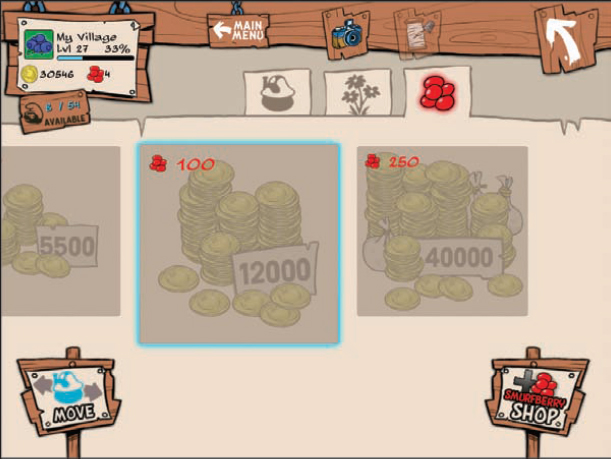
FIGURE 7-18: Common currency is expensive in terms of premium currency in “Smurfs' Village”
Note that the price of large amounts of gold is expensive in premium currency, because what you're really paying for in this game is time. If players were able to buy premium currency with common currency, however, the model would fail, not only from lost revenue, but also because any sense of “premium” would be lost (and you may as well have just started with one currency). If a system like that were implemented, then the gold cost of premium currency would likely be very high.
The Virtual Currency Game Flow
As a revenue system, SV can be summed up as follows.
- Players plant and harvest for gold and xp, causing their village level to increase, which unlocks new items and allows them to plant more crops.
- Players may accelerate this process using premium currency.
- Players buy virtual goods (using common currency) to place into the world.
- Players are exposed to premium goods, some of which actually provide gold and xp via mini-games.
- Players get more attached to the virtual world, but don't have enough for the cool stuff.
- Players examine the list of premium currency options because they spent it all accidentally accelerating things that really didn't matter.
- Players mull it over and choose the best value option, typically one of the higher price ranges.
- Players go on a smurfberry shopping spree, buying up several premium buildings, expanding land, accelerating crops where needed, and eventually running out of smurfberries.
- Players are more invested than ever, and start to get into the higher levels.
- Players get friends to gift items and have a “village envy” feeling, or the need to compete for the best virtual utopia. This incentive (or whatever else is rationalized) drives another purchase of premium currency, and thus the cycle continues, as long as there are frequent new items to grab, land to expand, or until interest finally wanes.
It works generally the same for other virtual currency games, too, in that there are a myriad of ways to earn common currency. But users must buy premium currency. The more invested you are in the game (and common currency helps you become so), the more incentive there is to buy the premium stuff.
Succeeding with the Freemium Model
The freemium model is taking over the App Store, and not just in games, but in variations for all apps via creative use of in-app purchases. Though that alone is not reason enough to adopt it, and, in fact, may be an incentive for exercising some caution or exploration of other viable options, there are many merits to the system if implemented properly.
